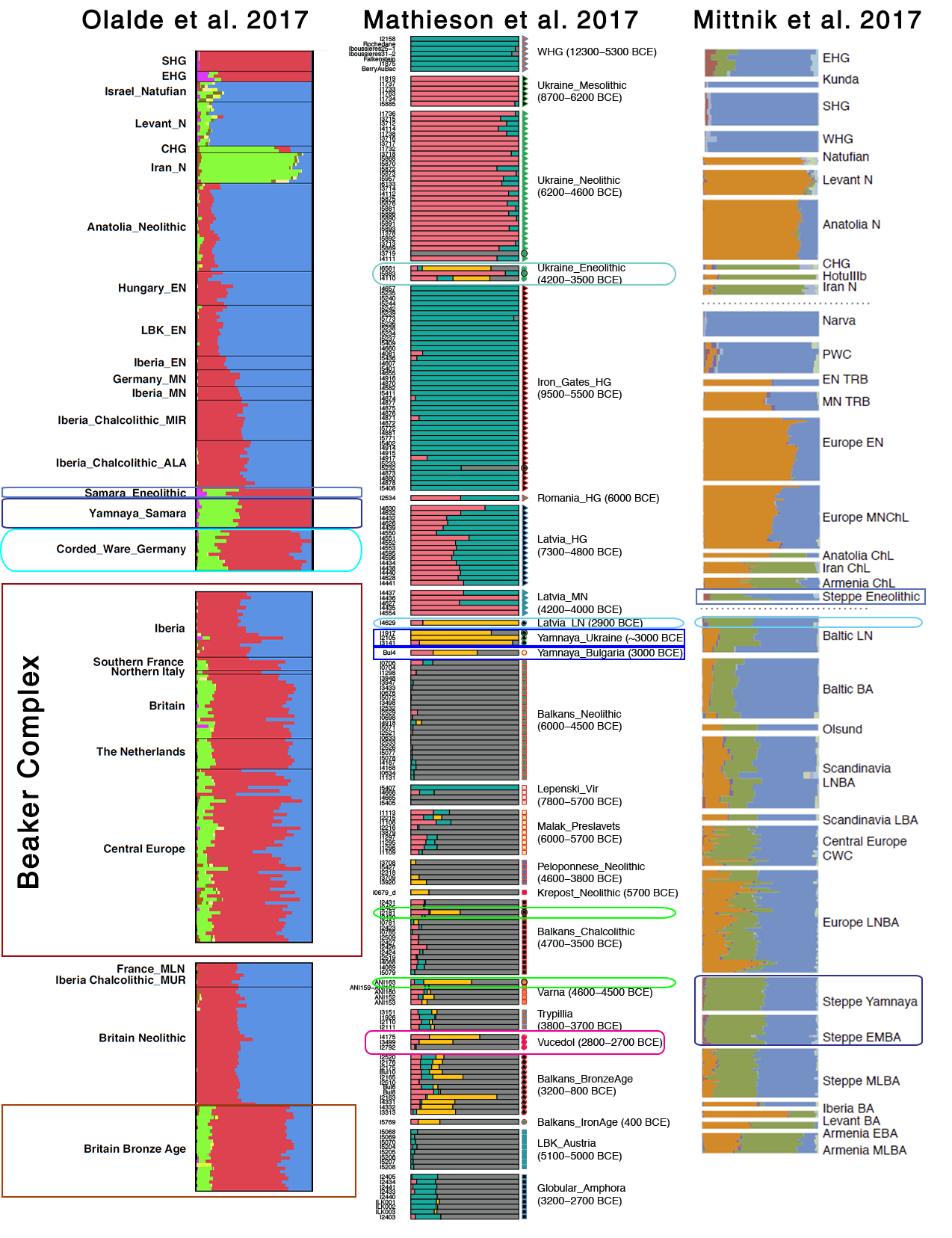If you have not seen it before, have a look at this :
http://homeland.ku.dk/
Sample ID / genetic sex (M/F): I0462 / F
Find location: Arroyal I, Burgos
Country: Spain
Associated label in publication: Beaker Iberia
Date: 2566–2345 calBCE (3950±26 BP, MAMS-25936)
MtDNA haplogroup (mother): K1a+195
Y-DNA haplogroup (father): null
Reference: Olalde et al. 2018
Colour group:
Steppe (autosomal)
Sample ID / genetic sex (M/F): I6588 / M
Find location: Humanejos, Madrid
Country: Spain
Associated label in publication: Beaker Iberia
Date: 2500–2000 BCE
MtDNA haplogroup (mother): U5b2b3
Y-DNA haplogroup (father): R1b1a1a2a1a (
L151)
Reference: Olalde et al. 2018
Colour group: Steppe (R1b)
Sample ID / genetic sex (M/F): I6472 / M
Find location: La Magdalena, Madrid
Country: Spain
Associated label in publication: Beaker Iberia
Date: 2500–2000 BCE
MtDNA haplogroup (mother): HV0b
Y-DNA haplogroup (father): R1b1a1a2 (
M269)
Reference: Olalde et al. 2018
Colour group: Steppe (R1b)
Sample ID / genetic sex (M/F): I5665 / M
Find location: Virgazal, Tablada de Rudrón, Burgos
Country: Spain
Associated label in publication: Beaker Iberia
Date: 2280–1984 calBCE (3730±40 BP, Poz-49174)
MtDNA haplogroup (mother): K1a24a
Y-DNA haplogroup (father): R1b1a1a2a1a2 (
P312)
Reference: Olalde et al. 2018
Colour group: Steppe (R1b)


